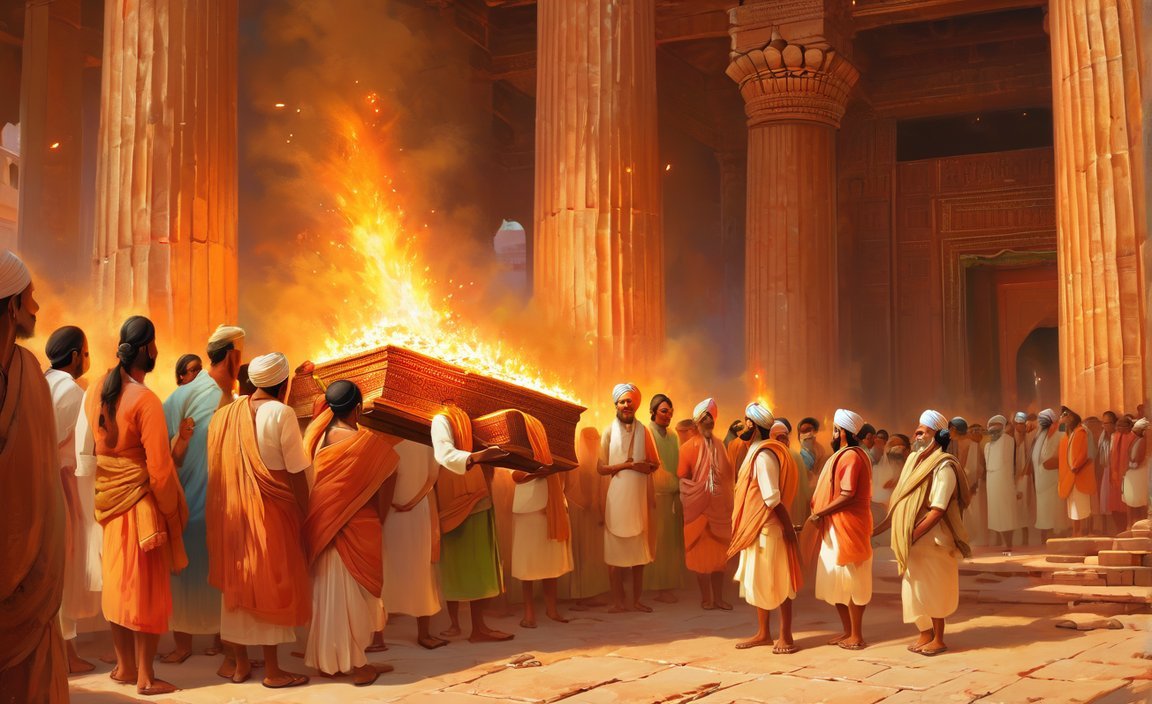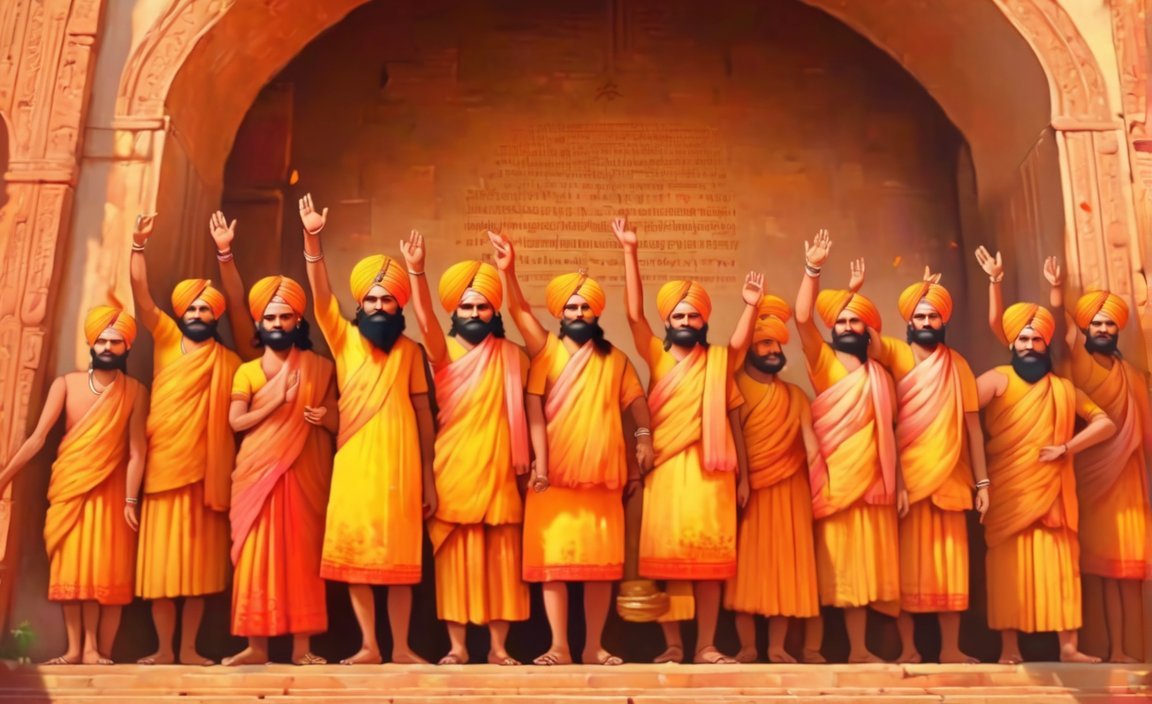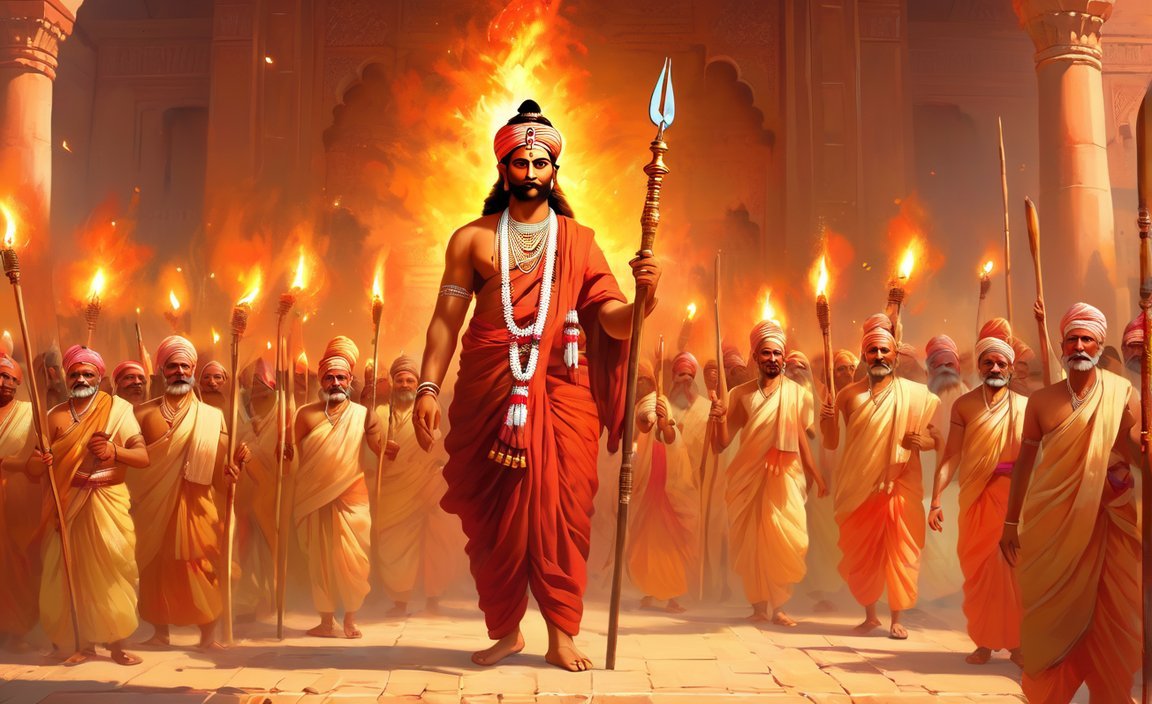Welcome to “Fascinating Discoveries: 10 Fun Facts About the Indian Constitution,” where we delve into the fascinating world of India’s constitutional framework. In this article, we will uncover intriguing insights and surprising aspects of the Indian constitution that will engage and captivate readers. So, get ready to be amazed as we explore the 10 fun facts about the Indian constitution, providing you with an enjoyable and informative journey through this significant document.

Key Takeaways:
- The Indian Constitution was handwritten by calligrapher Prem Behari Narain Raizada, instead of being printed.
- The drafting of the Indian Constitution took 2 years, 11 months, and 18 days, a lengthy process.
- The Indian Constitution borrowed ideas from other constitutions, including the federal structure from the Government of India Act 1935.
- The Indian Constitution is a unique blend of rigidity and flexibility, with some parts amenable to amendment with a special majority.
- It is also a blend of parliamentary and presidential forms of government, incorporating features from both systems.
- The Indian Constitution has been amended 104 times since 1950, making it one of the most amended constitutions globally.
- January 26, the date the Constitution was enacted, is celebrated as Republic Day in India.
- The Indian Constitution is the largest in the world, consisting of 448 articles, 12 schedules, and 94 amendments.
- 283 members of the Constituent Assembly signed the Constitution, including Dr. B.R. Ambedkar, the first Law Minister of Independent India.
- The original copies of the Indian Constitution are stored in special cases in the Central Library of the Parliament House in New Delhi.
10 Fun Facts About the Indian Constitution
1. Handwritten by a Calligrapher
Did you know that the Indian Constitution wasn’t typed or printed? Instead, it was meticulously written by hand in both Hindi and English by Prem Behari Narain Raizada, a talented calligrapher.
2. A Lengthy Process
The process of drafting the Indian Constitution was no small feat. It took a remarkable 2 years, 11 months, and 18 days to finalize the document. This reflects the immense dedication and effort put into shaping India’s constitutional framework.
3. Influence from Other Constitutions
The Indian Constitution drew inspiration from various sources. For example, it borrowed certain aspects of federal structure from the Government of India Act 1935. This shows how India’s constitutional framework is a result of careful study and adaptation of ideas from different constitutions around the world.
4. A Blend of Rigidity and Flexibility
The Indian Constitution strikes a unique balance between rigidity and flexibility. While certain parts can be amended through a special majority, others require a more stringent procedure. This dynamic approach allows the constitution to adapt to changing times while maintaining its core values.
5. Parliamentary and Presidential Elements
In a fascinating blend of parliamentary and presidential forms of government, the Indian Constitution incorporates features from both systems. This dynamic arrangement ensures a balanced distribution of power between the executive, legislative, and judicial branches of the government.
6. Record-breaking Amendments
Since its adoption in 1950, the Indian Constitution has been amended a staggering 104 times. This makes it one of the most extensively amended constitutions in the world. The ongoing evolution of the constitution reflects India’s commitment to adapting and improving its governance.
7. The Importance of January 26
Although the Constitution was passed on November 26, 1949, it officially came into effect on January 26, 1950. This date now holds great significance for India as it is celebrated as Republic Day, commemorating the day when the constitution became operational and India became a fully sovereign republic.
8. Size and Scope
The Indian Constitution holds the distinction of being the largest constitution in the world. It comprises a whopping 448 articles, 12 schedules, and 94 amendments. This vast document covers a wide range of legal and governance aspects, ensuring a comprehensive framework for India’s functioning.
9. Key Signatories
When the Indian Constitution was signed, a total of 283 members of the Constituent Assembly put their signatures on it. This included Dr. B.R. Ambedkar, who played a pivotal role in its drafting and went on to become the first Law Minister of Independent India. Their signatures stand as a testament to the collective effort and vision behind the constitution.
10. Storage of Original Copies
The original copies of the Indian Constitution are preserved in special cases within the Central Library of the Parliament House in New Delhi. These carefully guarded documents serve as a tangible reminder of India’s commitment to democracy and the importance placed on its constitutional framework.
In conclusion, the Indian Constitution is not only a legal document but also a testament to the rich history and diversity of India. Its unique characteristics and the care put into its creation make it a fascinating subject to explore. Understanding these 10 fun facts about the Indian Constitution sheds light on the complexities and intricacies of India’s governance system.
Here are some interesting facts about different places:
Did you know that Indianapolis is home to the famous Indianapolis Motor Speedway? Check out these 10 fun facts about Indianapolis and discover more fascinating information about this vibrant city. 10 fun facts about indianapolis
Ontario, the Canadian province, has so much to offer! Learn about its rich history and breathtaking landscapes with these 10 fun facts about Ontario. Click here to uncover interesting tidbits about this captivating province. 10 fun facts about ontario
Quebec, known for its French charm and beautiful architecture, hides many intriguing secrets. If you want to unravel the mysteries of this province, don’t miss these 10 fun facts about Quebec. Discover captivating details about Quebec’s culture, history, and more. 10 fun facts about quebec
Toronto, the bustling metropolis in Canada, has a lot more to offer beyond its impressive skyline. Grab these 10 fun facts about Toronto and delve into the vibrant culture, diverse culinary scene, and iconic landmarks of this cosmopolitan city. Click here to explore Toronto like never before. 10 fun facts about toronto
Vatican City, the smallest country in the world, is filled with astonishing facts that will leave you amazed. Discover the secrets of this historical and religious destination with these 10 fun facts about Vatican City. Unveil fascinating insights about its art, architecture, and papal traditions. 10 fun facts about vatican city
10 Fun Facts About the Indian Constitution
Fact 1: A Lengthy Constitution
The Indian Constitution holds the title as the longest constitution in the world. It consists of an impressive 448 articles, 12 schedules, and it has gone through 94 amendments[^1^].
Fact 2: A Handwritten Masterpiece
Unlike most constitutions, the Indian Constitution was not typed or printed. It was actually handwritten by skilled calligraphers, adding an artistic touch to this significant document[^2^].
Fact 3: The Collective Effort
When the Indian Constitution was signed into effect on January 26, 1950, it had the support of 283 members of the constituent assembly[^1^]. Their dedication and commitment to the democratic process paved the way for a new era in Indian governance.
Fact 4: Nehru’s Influence
Pandit Jawaharlal Nehru, the first Prime Minister of India, played a crucial role in laying the foundation for the Indian Constitution. His vision and commitment to democratic principles greatly influenced the document’s development[^1^].
Fact 5: Inspiration from Others
The Indian Constitution drew inspiration from various sources, including other constitutions. It incorporated certain points from other constitutions, such as the Government of India Act 1935, to create a comprehensive framework for the nation[^1^].
Fact 6: A Lengthy Process
Crafting the Indian Constitution was no easy task. It took an impressive period of 2 years, 11 months, and 18 days to finalize the document[^1^]. This extensive timeline showcases the careful deliberation and attention to detail that went into its creation.
Fact 7: Adoption by the Constituent Assembly
On November 26, 1949, the Indian Constitution was officially adopted by the Constituent Assembly, marking a significant milestone in India’s history[^1^]. This date still holds great importance today.
Fact 8: Evolution of the Constitution
The original version of the Indian Constitution consisted of 395 articles and 8 schedules[^1^]. Over time, it has undergone amendments to adapt to the changing needs of the country. The Indian Constitution has been amended 104 times to date, reflecting its ability to evolve with the times.
Fact 9: Safekeeping the Original Copies
Preserving the integrity of the Indian Constitution is of utmost importance. Three original copies of the constitution are stored in special, helium-filled cases within the library of the Parliament of India[^3^]. This ensures their protection and makes them accessible for future generations.
Fact 10: Celebrating Republic Day
January 26th is not only the day the Indian Constitution came into effect, but it is also celebrated as Republic Day in India. This important national holiday commemorates the adoption of the Indian Constitution and the country’s transition to a democratic republic[^1^].
Key Takeaways:
– The Indian Constitution is the longest constitution in the world, consisting of 448 articles, 12 schedules, and 94 amendments.
– It was handwritten by calligraphers, adding a unique artistic touch.
– The constitution was signed by 283 members of the constituent assembly, including Pandit Jawaharlal Nehru.
– Inspiration for the Indian Constitution was drawn from various sources, including the Government of India Act 1935.
– The drafting process took 2 years, 11 months, and 18 days.
– The constitution was adopted on November 26, 1949, by the Constituent Assembly.
– The original constitution consisted of 395 articles and 8 schedules.
– The Indian Constitution has been amended 104 times since its adoption.
– Three original copies of the constitution are stored in special helium-filled cases in the library of the Parliament of India.
– January 26th is celebrated as Republic Day, marking the adoption of the Indian Constitution and India’s transition to a democratic republic.
Read More:
– 10 Interesting Facts About The Indian Constitution You Should Know
– 10 Facts About The Indian Constitution – Important Things To Know
“Our Constitution is a ray of hope. It is a way of life. We should vow to protect it and uphold its values.” – Dr. B.R. Ambedkar
10 Fun Facts About Indian Constitution For Students
Key Takeaways:
– The Indian Constitution is the largest constitution in the world, consisting of 448 articles, 12 schedules, and 94 amendments.
– It was a handwritten document, written in Hindi and English by calligrapher Prem Behari Narain Raizada.
– The drafting process took 2 years, 11 months, and 18 days, involving the work of numerous experts.
– The constitution draws inspiration from various sources, incorporating ideas from multiple countries’ constitutions.
– It is a unique blend of rigidity and flexibility, allowing for amendments while providing stability.
– The Indian Constitution combines attributes of both parliamentary and presidential systems of government.
– Since its adoption, the constitution has been amended 104 times, reflecting its adaptability.
– The constitution’s length, complexity, and detail address various aspects of governance and society.
– It came into effect on January 26, 1950, marking India’s transition to a democratic republic.
– The Indian Constitution is widely regarded as a significant achievement in constitutional law.
The Indian Constitution is the largest Constitution in the world: With 448 articles, 12 schedules, and 94 amendments, the Indian Constitution stands as the largest constitution globally. It is a comprehensive framework that governs the functioning of India as a democratic republic.
The Indian Constitution was a handwritten document: Unlike printed constitutions, the Indian Constitution was beautifully handwritten by calligrapher Prem Behari Narain Raizada. This intricate process added an artistic touch to the historical document.
The drafting process was a lengthy endeavor: The process of drafting the Indian Constitution was a time-consuming task. It took a tremendous effort from experts, legal scholars, and political leaders over a span of 2 years, 11 months, and 18 days to finalize the constitution.
The Indian Constitution drew inspiration from various sources: The Indian Constitution borrowed certain points from other constitutions worldwide. It was influenced by the constitutions of countries such as the United States, Ireland, Australia, and Canada. This amalgamation of ideas from diverse constitutional frameworks contributed to the unique nature of the Indian Constitution.
It strikes a balance between rigidity and flexibility: The Indian Constitution exhibits a dynamic blend of rigidity and flexibility. While certain parts are relatively easier to amend, providing flexibility to adapt to changing times, other parts remain more rigid, ensuring stability and continuity. This balance allows for the evolution of constitutional principles without compromising the core values and framework.
The Indian Constitution blends parliamentary and presidential systems: Rather than adhering strictly to one form of government, the Indian Constitution combines elements of both parliamentary and presidential systems. This unique blend ensures the functioning of a democratic parliamentary republic with a President as the head of state.
The Indian Constitution has undergone numerous amendments: Since its adoption, the Indian Constitution has been subject to 104 amendments, showcasing its adaptability and evolution over time. These amendments reflect the changing social, political, and cultural landscape of India, ensuring that the constitution remains relevant and responsive to the needs of its citizens.
It addresses various aspects of governance and society: The Indian Constitution is renowned for its length, complexity, and detail. It contains numerous provisions that cover a wide range of topics, ranging from fundamental rights and directive principles to the functioning of federalism and the judiciary. This comprehensive approach ensures that the constitution addresses various aspects of governance and society.
The Indian Constitution came into effect on January 26, 1950: January 26 holds immense significance in Indian history as the day the Indian Constitution came into effect. This momentous occasion marked India’s transition from a British Dominion to a sovereign democratic republic, empowering its citizens with fundamental rights and democratic values.
The Indian Constitution is a landmark achievement: The Indian Constitution holds a special place in the field of constitutional law worldwide. It serves as the foundation for the democratic governance of India, ensuring the principles of justice, equality, and liberty. Its role in shaping India’s political, social, and legal landscape makes it a subject of great interest and study.
Citations:
– Source 1: World Blaze – 10 Facts About The Indian Constitution
– Source 2: Volunteer Work India – 10 Interesting Facts About The Indian Constitution You Should Know

FAQ
Q1: How long did it take to draft the Indian Constitution?
A1: The drafting of the Indian Constitution took 2 years, 11 months, and 18 days.
Q2: What is the significance of January 26th in relation to the Indian Constitution?
A2: The Indian Constitution was adopted by the Constituent Assembly on November 26, 1949, but it came into effect on January 26, 1950. This date is now celebrated as Republic Day in India.
Q3: How many amendments have been made to the Indian Constitution?
A3: The Indian Constitution has been amended 104 times since its adoption in 1950.
Q4: What is unique about the Indian Constitution?
A4: The Indian Constitution is a unique blend of rigidity and flexibility, combining features of both parliamentary and presidential forms of government.
Q5: Where are the original copies of the Indian Constitution stored?
A5: The original copies of the Indian Constitution are kept in special cases in the Central Library of the Parliament House in New Delhi.
- Unlock Filipino Culture: A Deep Dive into Traditions and Practices - April 23, 2025
- Unlock Spanish Culture: Insights & Opportunities Now - April 23, 2025
- White Spirit Uses & Substitutes: A Deep Dive for Pros & DIYers - April 23, 2025
















